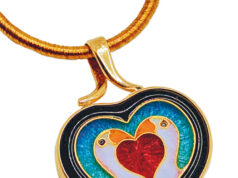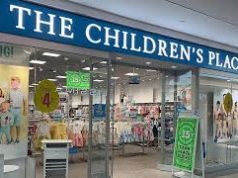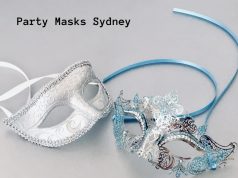When starting an apparel line or Discover Your Fabric Merchant Online getting into a style-primarily based business, there is much to reflect on consideration and paintings, from developing fresh designs to not copying the competitor’s product by chance. However, the number one attention is the uncooked material—the material. Not most effective does it help set the inspiration, but it’s also essential for manufacturers to stand out. This mini-manual will take you through finding the right cloth service provider. We understand how overwhelming it could get, so we can strive to simplify a way to discover a material service provider online. The article will even lay down a set of questions that need an answer for the duration of cloth sourcing. Click here
Steps to discover the correct fabric merchant
Research
A critical step closer to selecting a cloth service provider online is doing proper research. There are numerous installed brands inside the marketplace. One can simplest pass particular if they use a more recent and higher fabric type than the mounted ones inside the marketplace. And that requires excellent market research. Research approximately the type of fabric to choose, the merchant and mill fabric providers to pick, or even the product to sell. If a product doesn’t have a call for inside the market, there’s no need to invest in it. But the best research will let you know if it will be fruitful.
Find the area of interest.
Before you select your cloth and pick a material merchant, it’s crucial to establish a gap. Consider the following questions:
- Will the brand make men’s, women’s, or children’s clothes?
- Is it for particular activities or informal put on?
- Would the logo specialize in a specific garb of shirts, skirts, or pants?
- Are the garments for summer or winter or all-season wear?
- This will offer answers to these questions:
- What to make?
- Who is the product for
How to find cloth traders online
Ask a sales representative.
Inquire with sales representatives approximately the most popular patterns. One doesn’t have to inform them about attempting to construct a rival emblem. That’s because more and more consumers are inquiring about the products they buy. So go in advance and enquire.
Store representatives are some of the most valuable humans. They are acquainted with the goods, have found what sells, and, more crucially, have discovered what gets returned and why. They also are around the changing rooms, noting what clients have to mention concerning healthy concerns. recognize good approximate style traits, styles, shades, and materials to help with a brand’s research. Sales representatives can offer several prices to a brand. They are the unsung heroes of international fashion.
Do counter sourcing
An enormous question to recollect is whether or not the specialists within the logo can answer the questions of the merchant and turbine cloth manufacturers. Could they mention if the yarn length is X, the device gauge is Y, and the fiber is A % cotton and B % linen? If the logo is new, this may no longer be feasible. However, you can try counter-sourcing to make things less complicated. This includes gazing at the marketplace and obtaining a few reference samples for the cloth service provider. As time passes, an emblem will learn and can order cloth without counter-sourcing as experts do.
Some kinds of fabric to pick out from
In inventory
This material is in stock and prepared to buy. The colors are excellent, and any completing are already whole, and one can buy it off the shelf. This might also appear as a limitation, but it’s a good option while the brand is simply starting.
Advantages of purchasing fabric this is already in inventory:
- It is available when required.
- It is in inventory and will likely be available if you want to reorder months later.
- The minimum order amount (MOQ) is usually lower (maybe just 1 yard). With MOQ so low, you only need to invest higher once you feel relaxed.
The drawbacks of buying fabric off the shelf:
- There are only so many customization options beyond printing or embellishing.
- The cloth service provider will have a different coloration or more excellent required.
- Competitors might use identical materials.
Dead inventory
The cloth merchant has discarded this fabric because of decreased quality or is left over via some other emblem. Deadstock fabric has its blessings—it’s miles at once to be had and is regularly less expensive.
However, shopping for dead inventory material has its drawbacks:
- The delivery is limited—it could promote speedy, so the logo’s shopping branch should be proactive.
- The excellent may not be up to par—don’t purchase it without proper research and inspection.
- The sustainability of dead stock cloth is a point of competition.
Greige goods
This is the cloth that is unbleached and undyed. This cloth leaves room for creativity because it could be dyed, dealt with, and finished as consistent with the dressmaker’s alternatives. Typically, the brand can purchase a considerable quantity of this material from a fabric service provider. Then they should have more minor cuts colored and finished consistent with specs. The hues end and remedies of greige fabrics are all fully customizable. However, this material has its drawbacks:
- Minimum lengths of 500-1000 yards need to be ordered, which may not be feasible for the brand to put money into.
- There is a lot to do—the logo will need a mini-manufacturing facility in their personnel to do the dyeing and completing.
- All the cloth that isn’t always dyed or completed desires to be stored and used before it becomes unusable, as raw cloth deteriorates over time.
- The logo may get clients slower, so the invested cash will live blocked.
- Some extra questions to answer at this level
What is the material manufactured from?
The fiber inside the cloth may be silk, polyester, cotton, rayon, or a mix. If the emblem doesn’t recognize which fiber to use in their fabric, they must send a reference material to the fabric merchant.
How is the fabric made?
Fabric production can be of two types: knits and woven. Knitted cloth results from an unmarried yarn braided to create the quit product. Woven results from more than one yarn strolling true to left and pinnacle to bottom. These get woven again and again till the final product is prepared. The emblem has to understand how they want to assemble its material. Here’s a cheat sheet with examples: If the product is leggings, t-shirts, or undies, pick knits. Pick wovens if the stop product is pieces of denim, bedsheets, or get-dressed shirts.
What is the material weight?
The band will not use the identical weight for every fabric they use. So, it’s crucial to be aware of it for the cloth merchant and the designers. The fabric weight is grams according to the rectangular meter (GSM or GR/M2).
Why need to buy from an agent?
Agents will represent the logo in dealings with fabric manufacturers. They function as an intermediary and may be very useful to new brands. A reliable agent can have an in-depth talk with the brand about the necessities before approaching a mill for fabric sourcing. They additionally advocate whether or not the emblem’s requests are reasonable. They give statistics in smooth-to-recognize language for fabric designers, ensuring everyone involved in the production is on the same page. This way, the brand represented by the agent will also have solutions to the maximum questions the mill representatives will ask. The charges of an agent are typically part of the fabric charge, so the logo may additionally need to spend a piece extra (about 3-five in step with cent). But the stored relationships, knowledge, and time could be well worth it. So, an agent can assist if a brand needs help locating suitable material or isn’t sure of the necessities. Agents simplify the system and get admission to more excellent providers beneficial to the logo.
An incredible material merchant for each emblem
Think of it as your logo’s agent. From layout to delivery, we handle the entire procedure for our partner manufacturers—they most effectively want to region the order. The central function of our platform is its potential to allow brands to place an order, sign it, and get hold of daily updates on production. They can communicate with producers and make payments. Making our garb manufacturing procedure problem-loose, speedy, and transparent makes brands’ lives easier.






